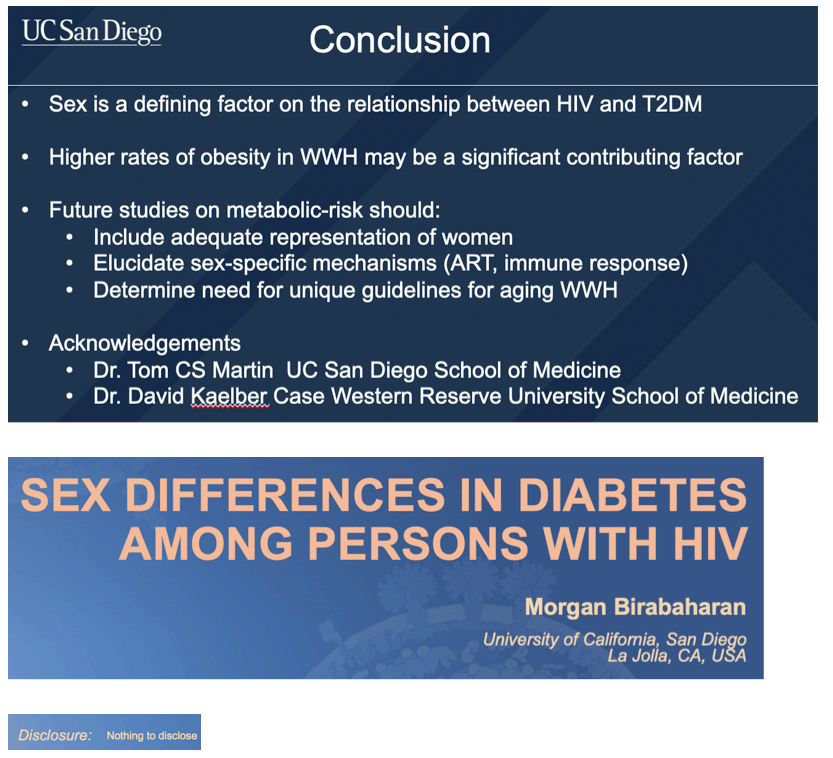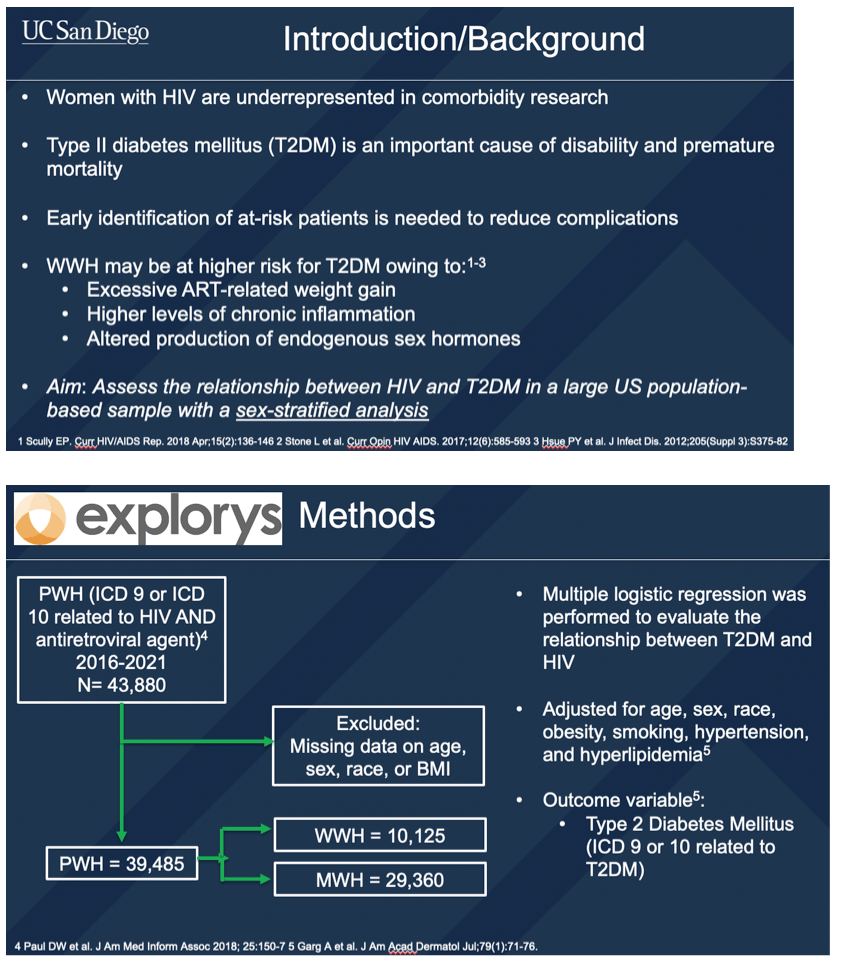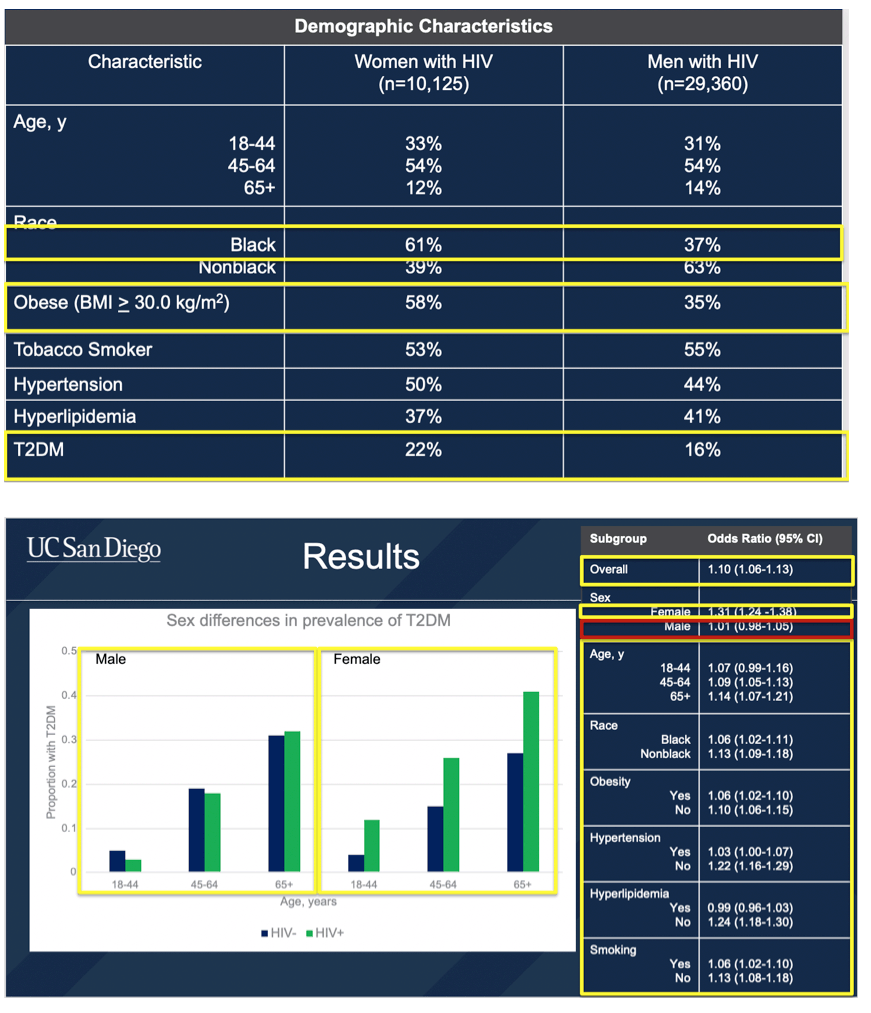 |
 |
 |
| |
SEX DIFFERENCES IN DIABETES PREVELANCE AMONG PERSONS
WITH HIV IN THE UNITED STATES...40% of HIV+ Women >65 have diabetes.
|
| |
| |
Morgan Birabaharan1, David Kaelber2, Thomas Martin1
1University of California San Diego, La Jolla, CA, USA, 2Case Western Reserve University, Cleveland, OH, USA
Background: There is conflicting evidence for an association between type 2 diabetes mellitus (T2DM) and HIV. Notably, most studies of T2DM prevalence among persons with HIV (PWH) have a heavy male preponderance. We assessed gender as a factor impacting the association between T2DM and HIV in the United States.
Methods: A cross-sectional study using a multi-health system electronic medical record analytics platform was performed (Explorys; IBM Watson Health, Cambridge, MA, USA). The database contains 64 million persons, representing 15% of the population across all 4 census regions of the United States. Persons with all types of insurance including self-pay are represented. All adults active in the database between Nov 2015 and Nov 2020 with complete records on age, gender, race and body mass index were included. PWH were identified using ICD-9 or ICD-10 codes related to HIV AND prescription for antiretroviral therapy. T2DM was defined using SNOMED-CT terms that corresponded to ICD 9 or 10 codes 250.x0-x2 and E11.8, respectively. Comparisons between groups were performed using the chi-square test with a P-value ≤0.05 being considered statistically significant.
Results: We identified 39,500 PWH and 13,015,560 HIV-seronegative controls. PWH were mostly younger than 60 years of age (29,260, 74%), 74% were male and 26% were female. Women with HIV (WWH) were more likely to be black and obese compared to men with HIV (MWH) (p<0.001). Prevalence of T2DM was higher among WWH compared to HIV-seronegative women (22% vs 14%, p<0.001). WWH were more likely to have T2DM across all age-subgroups (Figure 1). The prevalence of T2DM among MWH was lower compared to HIV- seronegative controls (16% vs 17%, p<0.002)....'among women >65 40% have diabetes in this study vs 27% for HIV- women'.
Jules
Conclusion: In this large US population-based study, we demonstrate that gender is a defining factor when considering the association between HIV and T2DM. WWH are disproportionately affected by T2DM with early data suggesting this could be due to higher rates of obesity. HIV-related clinical studies on metabolic risk should ensure adequate enrollment of WWH to take account of the differential risk for T2DM.



|
| |
|
 |
 |
|
|